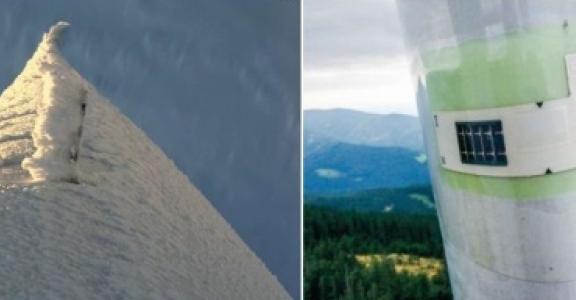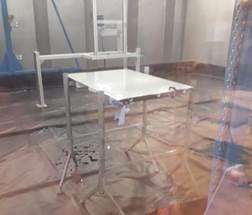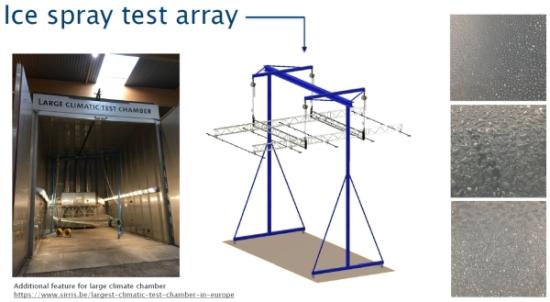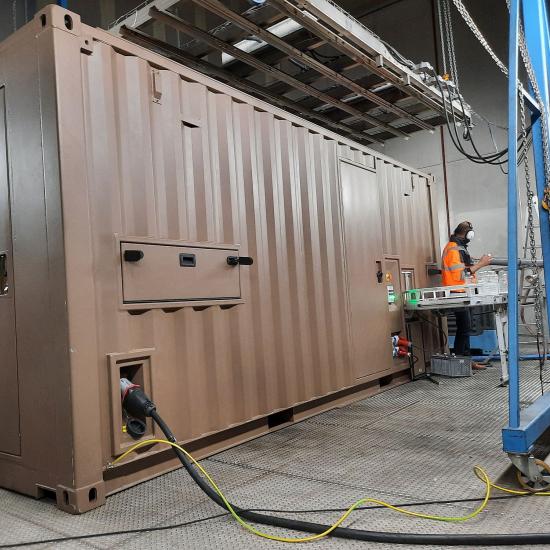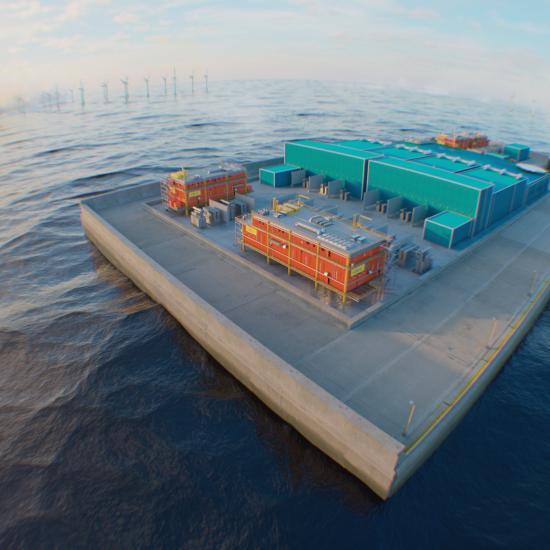As the weather gets colder, many systems, including aeroplanes and wind turbines, will again have to contend with the effects of lower temperatures, winter precipitation and ice formation. We recently published that temperatures and icing are among the ten most common problems leading to wind turbine failure. Recent developments could change this, saving costs and effort in multiple sectors.
Ice formation on the blades of wind turbines or the wings and propellers of an aircraft or drones results in reduced output, reduced lift or even imbalance resulting in vibrations. Ice formation is therefore countered both actively and passively. In the case of wind turbines, this ranges from shutting down the turbine in weather conducive to ice formation, to manual on-site inspections, to detection instruments on the nacelle (these cannot, however, provide an overall view of the blades). In Belgium, due to the safety regulations, a turbine can only be restarted after a visual inspection has confirmed with 100 percent certainty that no ice remains on the blades. Shutting down the turbine, resulting in loss of output, is expensive, as is visual inspection. Cheap and reliable detection methods therefore have great potential here.
The challenge to avoid these costs is to use sensors that can reliably detect both the presence and absence of ice. Various detection systems are available for this purpose. The challenge is to evaluate them efficiently and to apply them to wind turbines.
Ice detection by microwaves
An example of such a sensor is a new development from Canada: researchers at the University of British Columbia at Okanagan have developed a microwave-based detector that warns the operators of aircraft, helicopters or wind turbines at the exact moment that water becomes crystalline and ready to form ice. Structures were created that produce strong electric and magnetic fields around them. These fields are then used to detect changes in material properties. Initially, the sensors were used to test the permittivity of a substance, or the ease with which the molecules can rotate in the vicinity of an electric field. Water has a permittivity of 80, but this drops to 3.2 when it freezes. This is a huge difference that is easy to detect with these electric fields.
In cold regions such as Canada, aircrafts are regularly sprayed with de-icing agents before taking off. However, the effect of these agents is short-lived and re-spraying may be needed. Instead of relying on this time span, sensor measurements can be used. These sensors ensure the cost and environmental impact of de-icing methods can be reduced.
In addition to aviation and wind turbines, such sensors can be used everywhere ice formation occurs, such as footpaths, cooling systems, weather monitoring and on ships.
Listening for ice information
Another, relatively unknown, but promising technology for detecting ice uses acoustic signals generated during the freezing or melting of ice. The method was recently used in a research task by the University of Leuven and Brussels Airlines for 'Ice in the Fuel Tank' within the European NDtonAIR project. Acoustic emissions in the ultrasonic range can be used to detect all kinds of events that occur in stress relaxation processes during the transformation from liquid to frozen water.
A major advantage of this technology is that it can detect ice formation without direct contact with the frozen water since only acoustic signals are detected, which can travel greater distances. To expand the potential of this development and to test under more realistic conditions, a test programme was organised on the ice formation testbed at the Sirris climatic testing facility in Antwerp as part of the COOCK 'Fighting Icing' project. In this case, the model of an aircraft fuselage panel was subjected to ice-forming conditions. The potential of the method could be demonstrated under these conditions and the consortium can now look for further areas of application.
State-of-the-art ice detection
As part of the COOCK Fighting icing project, Sirris has a state-of-the-art report available covering the ice detection technologies that are already commercially available. These are sensors that operate according to three principles:
- Electrical principle: measurement of changing impedance and capacitance on the sensor surface.
- Optical principle: measurement of an optical signal that is influenced by ice formation between the source and the receiver of the signal.
- Mechanical principle: measurement of the changing vibration of a probe on which ice is formed.
One sensor from each of these three principles will be tested and evaluated in Sirris' large climate chamber using the ice formation testbed realised thanks to the NewSkin project. You can read more about our project results in our white papers written in the Coock Fighting Icing.
Sources
- Daniele Brandolisio, Overview of the state of the art methods and techniques for ice detection, Coock Fighting Icing Project Deliverable D2.1.1, Sirris, December 2020
- https://www.asme.org
- Stamm, H. Pfeiffer, J. Reynaert, M. Wevers, Using Acoustic Emission Measurements for Ice-Melting Detection, Applied Sciences, 9 (2019) 5387.
This blog was written as part of the COOCK project Fighting Icing which is funded by VLAIO (project no: HBC.2019.2495) and the European NewSkin project, which is funded under the research and innovation programme Horizon 2020 (No. 862100). Its output reflects only the views of the authors and the European Commission cannot be held responsible for any use that may be made of the information in it.
